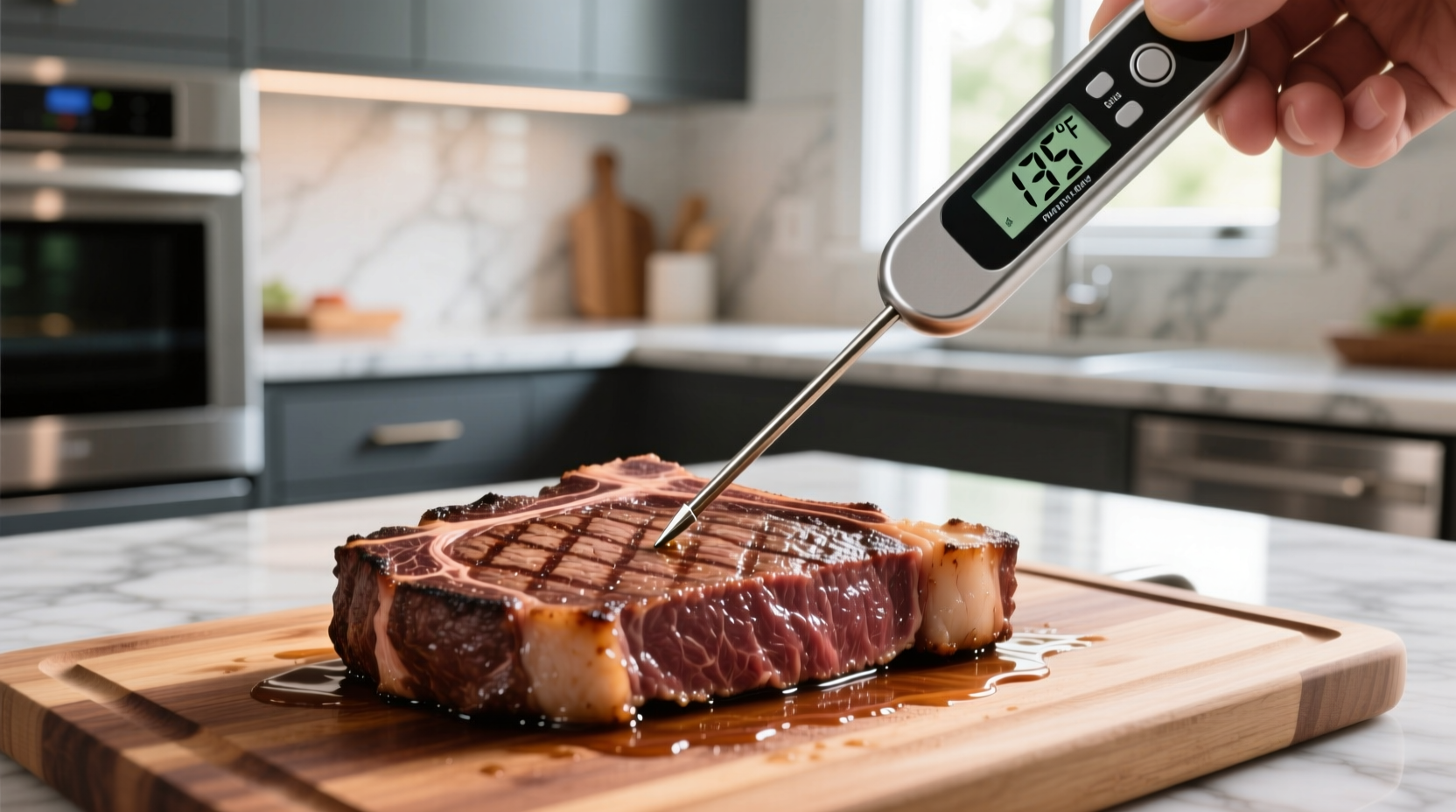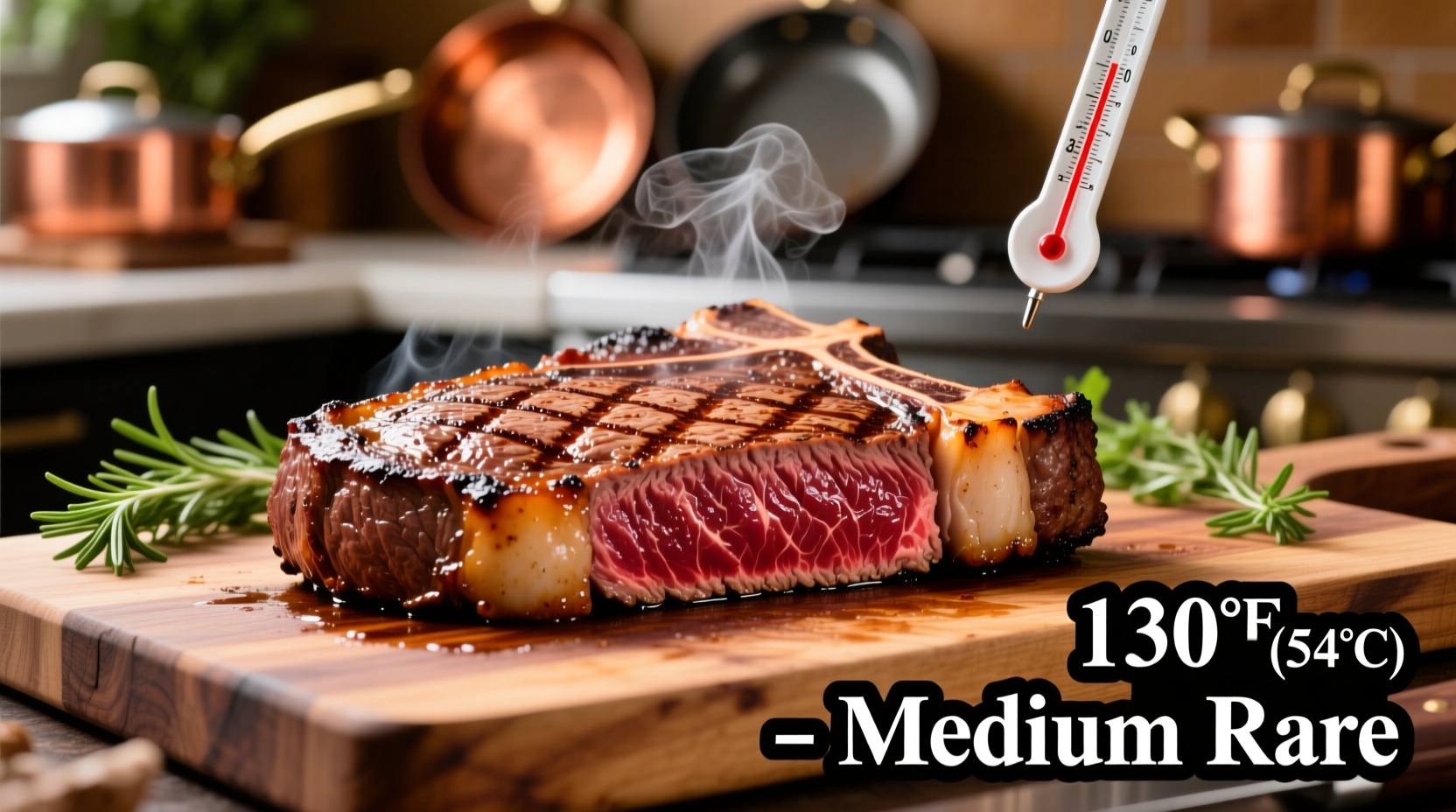Why Steak Temperature Matters More Than You Think
Getting steak temperature right transforms an expensive cut from disappointing to extraordinary. Temperature controls both food safety and the critical chemical reactions that create flavor, texture, and juiciness. Unlike time-based cooking methods, which vary wildly depending on steak thickness and cooking equipment, temperature provides the only reliable measure of doneness.
Your Complete Steak Temperature Guide
Professional chefs and home cooks alike rely on precise temperature measurements rather than guesswork. The table below shows exact internal temperatures for each doneness level, including both Fahrenheit and Celsius measurements:
| Doneness Level | Internal Temperature (°F) | Internal Temperature (°C) | Visual & Texture Characteristics |
|---|---|---|---|
| Rare | 120-125°F | 49-52°C | Deep red center, cool throughout, very soft texture |
| Medium Rare | 130-135°F | 54-57°C | Warm red center, soft and juicy (chef's recommended) |
| Medium | 140-145°F | 60-63°C | Warm pink center, slightly firm, retains good juiciness |
| Medium Well | 150-155°F | 66-68°C | Slightly pink center, firm texture, reduced juiciness |
| Well Done | 160°F+ | 71°C+ | Little to no pink, very firm, often dry and chewy |
How Temperature Changes During Resting
Understanding temperature carryover is crucial for perfect results. When you remove steak from heat, the internal temperature continues rising 5-10°F (3-6°C) during resting. This phenomenon, called carryover cooking, means you should pull your steak from heat 5°F below your target temperature. For example:
- For medium-rare (135°F), pull at 130°F
- For medium (145°F), pull at 140°F
- Thicker cuts experience more carryover than thinner ones
Resting time also affects final temperature. As noted by the USDA Food Safety and Inspection Service, allowing meat to rest for 3-10 minutes (depending on thickness) lets juices redistribute while the temperature stabilizes. This critical phase transforms a potentially dry steak into a juicy masterpiece.
Proper Technique for Measuring Steak Temperature
Where and how you insert your thermometer dramatically impacts accuracy:
- Use an instant-read digital thermometer - These provide readings in 2-5 seconds with ±0.5°F accuracy
- Insert horizontally through the side - For thinner cuts, insert from the side to reach the true center
- Check multiple spots - Especially with irregular cuts like filet mignon
- Avoid bone and fat - These conduct heat differently than muscle tissue
- Wait 15 seconds - For the reading to stabilize before removing

When Different Temperatures Make Sense
While medium-rare (130-135°F) represents the sweet spot for most premium cuts, certain situations call for different temperatures:
- Food safety considerations: For ground beef products like burgers, the USDA requires 160°F minimum due to potential bacterial contamination throughout the meat
- Personal preference: Some diners prefer medium for certain cuts like flank or hanger steak
- Cut-specific recommendations: Delicate cuts like filet mignon shine at medium-rare, while tougher cuts like chuck steak often benefit from higher temperatures (145-150°F) to break down connective tissue
- Special dietary needs: Pregnant individuals and immunocompromised people may opt for higher temperatures despite potential texture trade-offs
Avoid These Common Steak Temperature Mistakes
Even experienced cooks make these critical errors that ruin otherwise perfect steaks:
- Testing too early - Opening your grill or oven frequently during cooking causes significant temperature fluctuations
- Relying on color alone - External appearance doesn't reliably indicate internal temperature, especially with smoked or seared steaks
- Ignoring carryover cooking - Failing to account for temperature rise during resting leads to overcooked results
- Using inaccurate thermometers - Old dial thermometers can be off by 10-15°F; calibrate regularly
- Not cleaning thermometer probes - Cross-contamination between raw and cooked meat poses food safety risks
Perfecting Your Steak Cooking Process
Temperature is just one component of perfect steak. Combine precise temperature control with these professional techniques:
- Bring steak to room temperature - 30-60 minutes before cooking ensures even heating
- Pat dry thoroughly - Moisture prevents proper searing; use paper towels for best results
- Season generously - Salt at least 40 minutes before cooking for optimal flavor penetration
- Use the right oil - Avocado or grapeseed oil withstand high searing temperatures better than olive oil
- Monitor ambient temperature - Outdoor cooking requires adjustments for wind and ambient temperature











 浙公网安备
33010002000092号
浙公网安备
33010002000092号 浙B2-20120091-4
浙B2-20120091-4